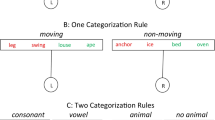Abstract
In response to the comments of Rachman (1984) and Mahoney (1984), we attempt to further clarify some of the key features of our perspective on the role of emotion in human functioning and in psychotherapy change. The model we are proposing is a compromise between a realist and a constructivist position. We believe that emotional experience involves the pick-up of real information both from the environment and from the organism itself. It is hypothesized that the basis structure for emotional experience is inwired. At the same time, however, emotion is also viewed as the product of a constructive or synthetic process through which subsidiary components are integrated at a preattentive level and synthesized into a unified conscious experience. We argue that a complex scheme of the type that we have elaborated is required to do justice to the complex nature of emotional processes, and that this complexity need not necessarily constitute an obstacle to research.
Similar content being viewed by others
References
Bower, G. H. (1981). Mood and memory.American Psychologist, 36 129–148.
Broadbent, D. (1977). The hidden preattentive processes.American Psychologist, 32 109–118.
Dixon, N. (1981).Preconscious processing. New York: Wiley.
Gibson, J. J. (1981)The ecological approach to visual perception. Boston: Houghton Mifflin.
Greenberg, L. S., & Safran, J. D. (1980). Encoding, information processing and cognitive behavior therapy.Canadian Psychologist, 21 59–66.
Greenberg, L. S. & Safran, J. D. (1981). Encoding and cognitive therapy: Changing what clients attend to.Psychotherapy: Theory, Research, and Practice, 18 163–169.
Greenberg, L. S. & Safran, J. D. (1984). Intergrating affect and cognition: A perspective on the process of therapeutic change.Cognitive Therapy & Research 8, 559–578.
Greenberg, L. S., & Safran, J. D. (in press).Affect and cognition: Therapeutic change processes. New York: Guilford Press.
Leventhal, H. (1984). A perceptual-motor theory of emotion. In L. Berkowitz (Ed.),Advances in experimental social psychology. New York: Academic Press.
Levanthal, H. (1982). The integration of emotion and cognition: A view from the perceptual-motor theory of emotion. In M. S. Clarke & S. T. Fiske (Eds.),Affect and cognition. Hillsdale, New Jersey: Erlbaum.
Mahoney, M. J. )1984). Integrating, affect and action: A comment.Cognitive Therapy & Research, 8 585–589.
Neisser, U. (1976).Cognition and reality. San Francisco: Freeman.
Neisser, U. (1980). Three cognitive psychologies and their implications. In M. J. Mahoney (Ed.),Psychotherapy process: Current issue and future directions. New York: Plenum Press.
Piaget, J. (1954).Construction of reality in the child (M. Cook Trans.). New York: Basic Books.
Posner, M. I., & Synder, C. R. (1975). Attention and cognitive control. In R. L. Solo (Ed.),Information processing and recognition. Hillsdale New Jersey: Erlbaum.
Rachman, S. (1984). A reassessment of the “primacy of affect.”Cognitive Therapy & Research 8 579–584.
Rice, L., & Greenberg, L. S. (1983).Patterns of change. Intensive analysis of psychotherapy process. New York: Guilford Press.
Schiffrin, R. M., & Schneider, W. (1977). Controlled and automatic human information processing: II. Perceptual learning, automatic attending, and a general theory.Psychological Review, 84 127–150.
Shevrin, H., & Dickman, S. (1980). The psychological unconscious. A necessary assumption for all psychological theory.American Psychologist, 35 421–434.
Zajonc, R. (1980). Feeling and Thinking: Preferences need no inferences.American Psychologist, 35 151–175.
Author information
Authors and Affiliations
Rights and permissions
About this article
Cite this article
Greenberg, L.S., Safran, J.D. Hot cognition — emotion coming in from the cold: A reply to Rachman and Mahoney. Cogn Ther Res 8, 591–598 (1984). https://doi.org/10.1007/BF01173257
Issue Date:
DOI: https://doi.org/10.1007/BF01173257




